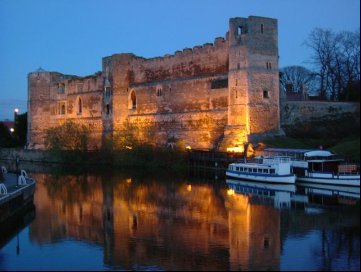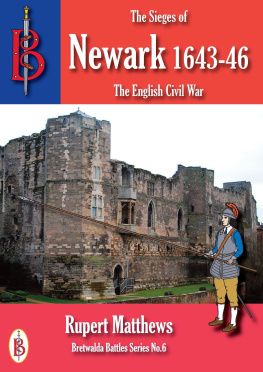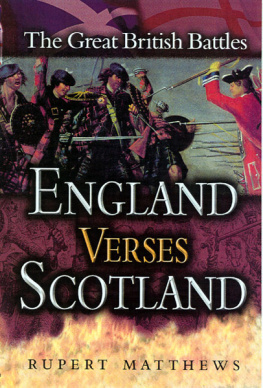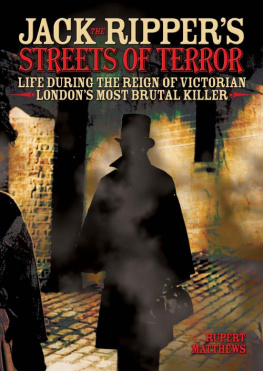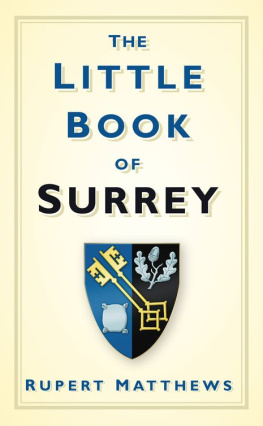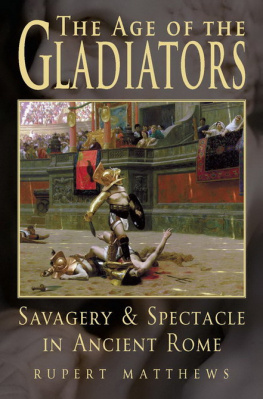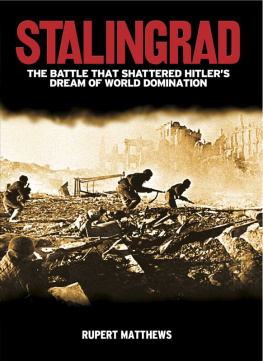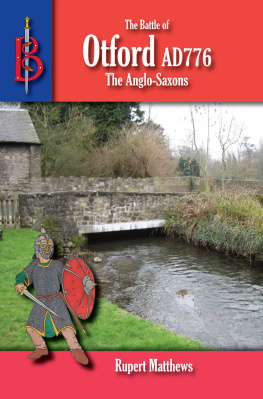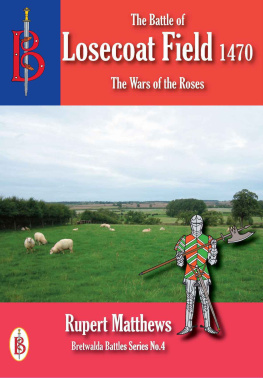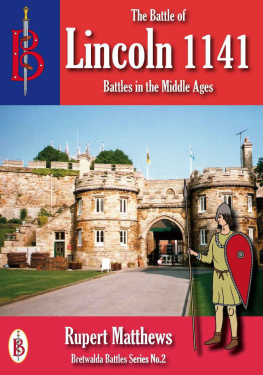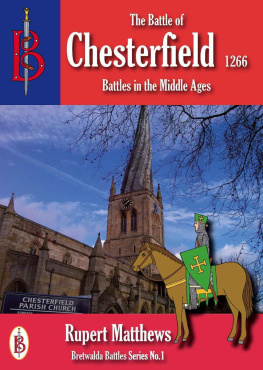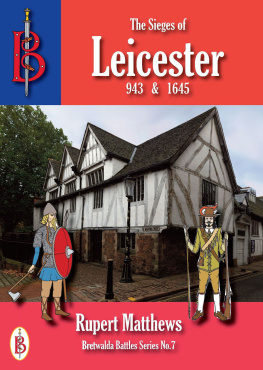Bretwalda Battles
The English Civil War
The Sieges of Newark 1643-45
by Rupert Matthews
*****************
Published by Bretwalda Books
Website : Facebook : Twitter : Blog
This ebook is licensed for your personal enjoyment only. This ebook may not be re-sold or given away to other people. If you would like to share this book with another person, please purchase an additional copy for each person. If you're reading this book and did not purchase it, or it was not purchased for your use only, then please purchase your own copy. Thank you for respecting the hard work of this author.
First Published 2013
Copyright Rupert Matthews 2013
Rupert Matthews asserts his moral rights to be regarded as the author of this work.
ISBN 978-1-909099-58-6
*****************
Contents
************
Newark is today a charming market town in Nottinghamshire perched on the River Trent and nestled between the ancient ruined castle and the equally ancient but entirely intact Church of St Mary Magdalene with its soaring spire. There are shops and markets, banks and estate agents - exactly what you would expect in this sort of bustling but somehow quiet country town.
But it was not always like this. There was a time when the fate of kingdoms was decided here. The three sieges of Newark were fought during the English Civil War between the Royalist Cavaliers and the Parliamentarian Roundheads. The town had declared for the king early in the war, but its strategic position meant that Parliament coveted it. The first attack by the Roundheads came within weeks of the outbreak of the war. It was resisted with some ease, but Parliament was not to be frustrated so easily. They came back a few months later with a larger army, larger guns and a good deal more determination. That second siege was more serious than the first and culminated in a pitched battle fought outside the walls.
For Newark worse was to come with the third assault, or Great Siege, which began in 1645 and dragged on to 1646. That offensive saw the town endure enormous hardships as hunger and disease stalked the streets claiming victims as surely as did the mortar shells and cannon balls that pounded the town.
These were hard times for the town, which sustained massive damage to its fabric, inhabitants and prosperity. And yet Newark somehow survived it all. Despite the carnage, bloodshed and violence the town kept going. It keeps going still and if it is apparently unaltered by the sieges, appearances can be deceptive. Tucked away in back gardens are entrenchments and bastions that date back to the sieges. The castle itself was ruined during the Civil War and now stands as a gaunt and sombre reminder of the damage that war can do to even the most peaceful of towns.
************
The English Civil War
The English Civil lasted from 1642 to 1651, falling into three distinct phases which are sometimes termed the First Civil War (1642-46), the Second Civil War (1648-49) and the Third Civil War (1650-1651). Such terminology is one of historians, for the people of the time the bloodshed seemed more like one interminable conflict that restarted when people thought it was over.
The key causes of the Civil War have been debated endlessly, with historians seeking to find social, religious or political features that explain why the apparently peaceful and settled Kingdom of England suddenly collapsed into anarchy, bloodshed and violence. While the causes were no doubt complex, they can be reduced to two basic causes: First, a dispute between King and Parliament over who should rule England; Second the foolishness of King Charles I.
For generations the balance of wealth and power in England had been shifting from the monarchy and the old landed nobility to a new rising class of gentry and merchants. Trade overseas and a growing industrial base, albeit one still very much craft based, was making the small businessman and farmer comparatively much more prosperous than such men had been a century or two earlier. With increased prosperity came better education and higher aspirations. A degree of social mobility not found in many other countries allowed the richer and more successful merchants and gentry to move up into the ranks of the nobility, meaning that the attitudes and outlooks of the growing middle classes began to be felt higher up the social structure.
This newly wealthy and ambitious middle class found its political outlet in the House of Commons in Parliament. At this date only a minority of people had a vote when it came to electing a Member of Parliament, but the local gentry did business with and mixed freely with the mass of the population in a way the king and nobles did not. They were likely to know what even the poorest of their fellow citizens thought and believed, even if they did not entirely agree themselves.
The House of Commons was, therefore, very much a middle class institution at a time when the middle class was increasingly wealthy and well educated, and in touch with the country as a whole. The powers of Parliament were, however, restricted. It had no power to make any laws at all. All it could do was debate and agree Bills, or Requests, which were then sent to the monarch for decision. It was entirely up to the monarch to agree or reject these Bills. On the other hand, the monarch could not raise taxes. All the king could do was come up with an idea for a tax and send it to Parliament for agreement. It was entirely up to Parliament if the request for a tax should be agreed or refused. Since most taxes were levied annually or at most for a few years at a time, Parliament could use its power to agree or refuse taxes to pressure the monarch into agreeing Bills.
This interplay had been going on for centuries without much rancour or trouble. A forceful monarch such as Henry VIII would bully Parliament, a wily one like Elizabeth Iwould flatter it. Generally a way forward was found that suited everyone and disputes were rare indeed. But as the balance of wealth shifted to the middle classes, so Parliament came to have more of an upper hand than before. Compromises were reached, deference shown, deals agreed and England was governed peacefully.
And then King Charles I came to the throne.
The problem with Charles would prove to be that he had no common sense at all. For centuries the English coronation ceremony had included two elements:blessing with holy oil, giving Gods sanction, and acclamation by the congregation, bestowing the approval of the people of England. Under English custom, the king had always ruled with the consent of the people - and more than one king had been removed when that consent ended. But in the 1580s a French philosopher named Jean Bodin had developed the theory of Divine Right, based on the French way of doing things. This theory stated that kings were chosen by God, since it was God who had decided who should be the oldest surviving son of the previous monarch. Bodin believed that it followed that opposing the will of the monarch was equivalent to sacrilege and was therefore illegal. Effectively this was a theory that justified the autocratic and arbitrary rule of the French monarchs. Very useful it was to French monarchs who were struggling with a restive nobility, and other European monarchs picked it up as a useful tool to use in their kingdoms.
